Benefits of Vehicle Pet Barriers

For many, no family trip or recreational outing is complete without your favorite four-legged family member along for the journey. However, traveling with your dog can become quite a chore if you don't have the right equipment. Without careful preparation, your family could be in for a stressful, poorly equiped, and distracting day or road trip. If you're taking a road trip, prepare with this guide for Traveling Cross-Country With a Dog.
By preparing well for your pet to join in on the fun, you can easily have a stress-free and fun time! Whether you're going hiking with your golden retriever or snuggling up beachside with your Frenchie, make sure you have got when you need for you and your pet to get to the fun, and home, safely.
If you plan to take a vacation with your pets in two, you must always make safety and comfort a priority for everyone, including the dog. When traveling in a car with your dog, it's important that your pet is not jumping all over you or your passengers. This could cause a distraction and end up causing a wreck. If you drive a standard 4-door car, secure your pet in the back seat with a restraint, like a seat belt harness. If you drive a SUV or other sport utility vehicle with a third row seat or space behind the back seat, using a pet barrier is one of the easiest and most cost-effective ways of keeping you and your pet safe. Keep reading to find out how pet barriers can keep your furry-family member safe!
VEHICLE PET BARRIERS
Vehicle Pet Barriers for your car can help protect you and your dog in several ways. If you or the driver in front of you needs to come to an abrupt stop on the road, having a pet barrier will keep your dog from flying forward into the front seats or the dash. Additionally, if you know your pet is restrained safely, you will be less likely to instinctively throw your hands up to protect your animal. This allows you to focus on driving and correcting any emergency mistakes more accurately.
Another way a barrier helps to protect both you and your pet is by reducing distraction. Many drivers will admit that they are distracted when driving with their dog in the passenger seat – the puppy dog eyes, snooping in your purse for treats, or nudging you for attention. By traveling with your dog in the back of your vehicle, you are much less likely to interact with or be distracted by them.
Having a barrier in your car can also aid with the difficulties that can accompany an anxious pet. Whether your furry companion likes to pester you for attention or prefers to express their anxiety physically by constantly shifting from the front seats to the back – damaging your car in the process. Often, providing a designated space for them can help calm their anxiety and offers them an area that feels safer and more like their own. In addition to this, adding a blanket or a favorite toy or two to their area can help them feel more relaxed.
There are a variety of vehicle pet barrier on the market today. Some styles can be attached to the front seat head rests and either to the seat belt mount or the car seat frame. Be sure to measure the width of your car as your select a barrier to make sure you get the correct size.
Once you have found an option that you think will work best for you, you will be pleasantly surprised at how easy they are to install. Depending on the style, you can easily attach and remove them as needed. The Precision Pet Universal Vehicle Pet Barrier (shown in the image below) is easy to install and complies with state animal safety laws.
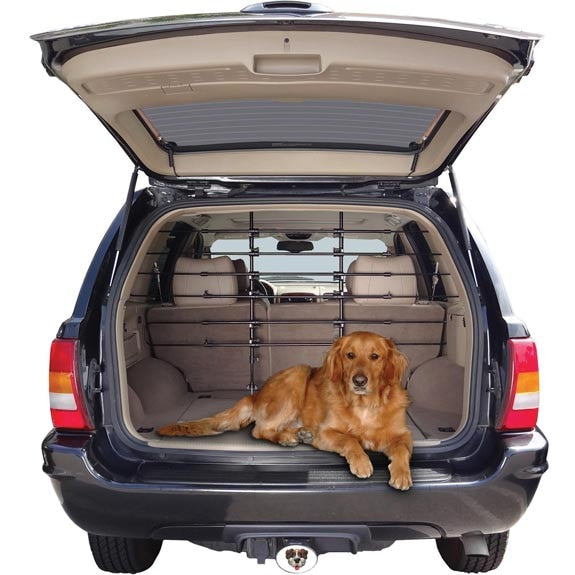
Depending on the size of your dog, you may want to invest in a more sturdy or high-end barrier. We assure you that it is a worthwhile investment! Remember a Corgi or Great Dane will need different levels of protection. Think about what will properly restrain a large dog and remember there is no need to go overboard for small breeds.
Premium quality pet barriers are usually scratch and tear-resistant, making them exceptionally sturdy for fussy back seat drivers and pooches with a persistant case of FOMO. Just like considerations with size, consider how much your pet will become frustrated by restraints. If you think they will likely paw, gnaw, and claw at it, consider getting a model with higher quality materials. Recognize also that superior quality options will protect your car's interior and upholstery.
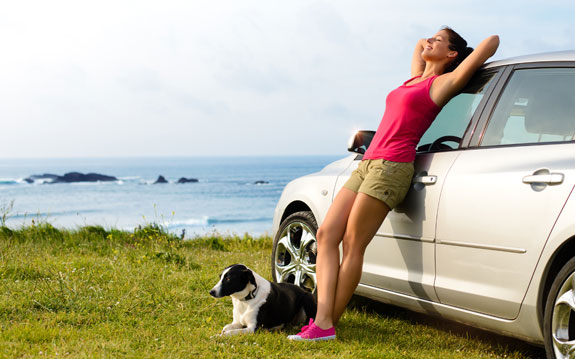
We get it, we too want to take our dogs everywhere we go! Whether you are driving to and from doggy daycare, headed to the dog park, or adventuring out on a road trip, make sure you, your dog, and your car are safe and protected for the journey with a pet barrier. By providing your pet with a designated space you can keep them safe, protect the interior of your car, and give them an area that feels like their own space. All of these benefits, plus getting there and home safely are all the reasons why you should use a pet barrier when traveling with your pet.
Previous article
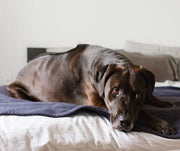
Next article
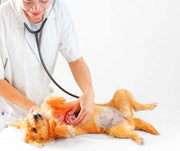
Related posts
View all-
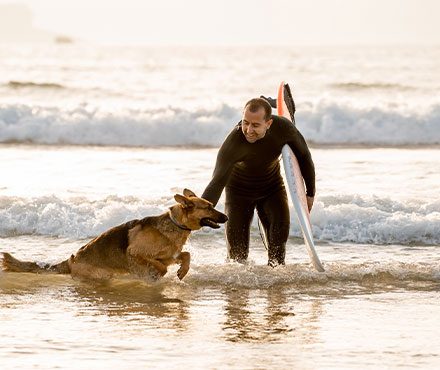
Activities To Do With A Dog That Loves Water
Some dog breeds seem to be happy to play in the water all day if you let them. For these pups, there are plenty of summer activities that will keep them entertained. Here are examples you can do with a dog that loves to splash and play in the water. Read Article -

How to Get My Cat to Use His Scratching Post
Many cats prefer scratching furniture over a post, leaving their owners frustrated with shredded sofas and clawed-up carpets. But don’t worry—getting your cat to use a scratching post instead of your couch is possible with the right approach.
Read Article -

How to Get My Cat to Stop Using My Chairs as Scratching Posts
If your cat is turning your dining chairs into their personal scratching post, you’re not alone. Many cats scratch furniture, and while it’s frustrating, it’s also completely normal. Scratching isn’t just about sharpening their claws—it’s how cats stretch, mark their territory with scent glands, and relieve stress.
Read Article



